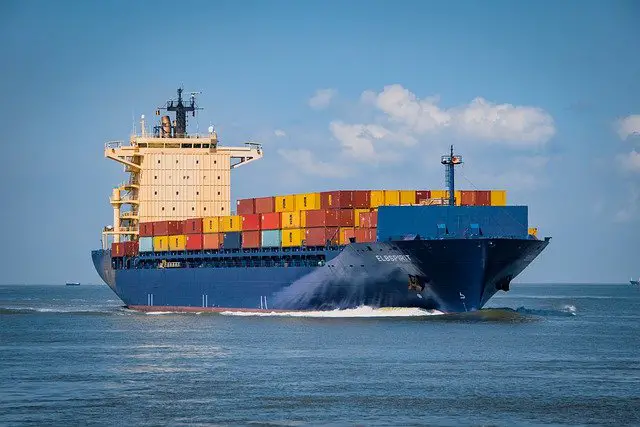CNBC is reporting that its Supply Chain Heat Map data shows that China’s surge in Covid-19 cases is now having a major impact on the completion of manufacturing orders.
Logistic managers are reporting that even with US manufacturing orders down 40% due to a collapse in demand from economic conditions, Chinese factories are already unable to complete orders. In addition, ocean bookings are also softer, according to SONAR data.
Hong Kong-based shipping firm HLS wrote to clients in a note, “With 1/2 or even 3/4 [of the] labor force being infected and not able to work, many China manufacturers can not operate properly but produce less than their optimal outputs. The container pickup, loading, and drayage (trucking) are also affected as all businesses are facing the impacts of COVID. We expect a very soft volume after the Lunar New Year because a lot of factories have slowed production due to the increasing infection, and have to cancel or delay the bookings for the 2nd half of January and also early February.”
The firm added, “All indications that the Chinese cities are experiencing infection peaks is based on the surge of infected family members, friends, and colleagues, the long lines at the fever clinics at hospitals across the country.”
The firm also noted that there are supply chain delivery problems manifesting at three major ports across China due directly to the surge in Covid.
The world’s top container port, the Port of Shanghai, has warned that, “Cancellations are increasing as many factories can’t operate properly due to a lot of workers getting infected with Covid.”
The fourth-largest container port in the world, the Port of Shenzhen, in the city which houses Apple’s operations, has issued the same warning, noting, “The booking cancellation is increasing as many factories can’t operate properly due to a lot of workers getting invested with Covid.”
Meanwhile, the sixth largest port in the world at Qingdao, has reported its factories have only “1/4 labor force and can not ensure normal production.”
Alan Baer, CEO of OL USA said, “Factory orders are down between 30%-40%, which you would think would help in the completion of the products. This is not happening in some areas of the country which is troubling. Then you have to factor in the additional Covid surges after Chinese New Year. Q1 will be challenging.”
MarineTraffic notes that Covid impacts on trucking are causing port productivity in Shanghai to deteriorate.
Alex Charvalias, Supply Chain In-Transit Visibility Lead at MarineTraffic said, “While China has recently removed its zero-Covid restrictions, the congestion in Shanghai seems to have risen as MarineTraffic data shows that during the first week of 2023 that the average vessel TEU (twenty-foot equivalent unit) capacity waiting out of port limits was 321,989 TEUs, which is the highest amount recorded since April 2022. Also, the congestion in Ningbo and Qingdao is rising as well, with 273,471 TEUs and 277,467 TEUs, respectively.
Delays are manifesting in Project44 container wait time data as well.
Adam Compain, senior vice president of Global Product Marketing at Project44 said, ″The container dwell (wait time) in Shanghai has begun to rise as a result of soaring Covid-19 rates. These times are expected to continue to rise as cases increase and Chinese New Year causes seasonal delays.”
Mark Baxa, CEO of the Council of Supply Chain Management Professionals (CSCMP) noted, “The reliability of exports out of China has decreased,” said . “The spike in Covid-19 infection rates and the lack of clarity around worker availability to process and manufacture orders has reduced reliability.”
Jordan Brunk, chief marketing officer for WarehouseQuote noted inventories are still high however, adding, “We are still seeing an extremely tight market with limited [third-party logistic] and industrial capacity nationwide. We are continuing to see consistent increases in storage rates all over the U.S., with the exception of the southeast, which would indicate capacity is still tight across nearly all regions.”

